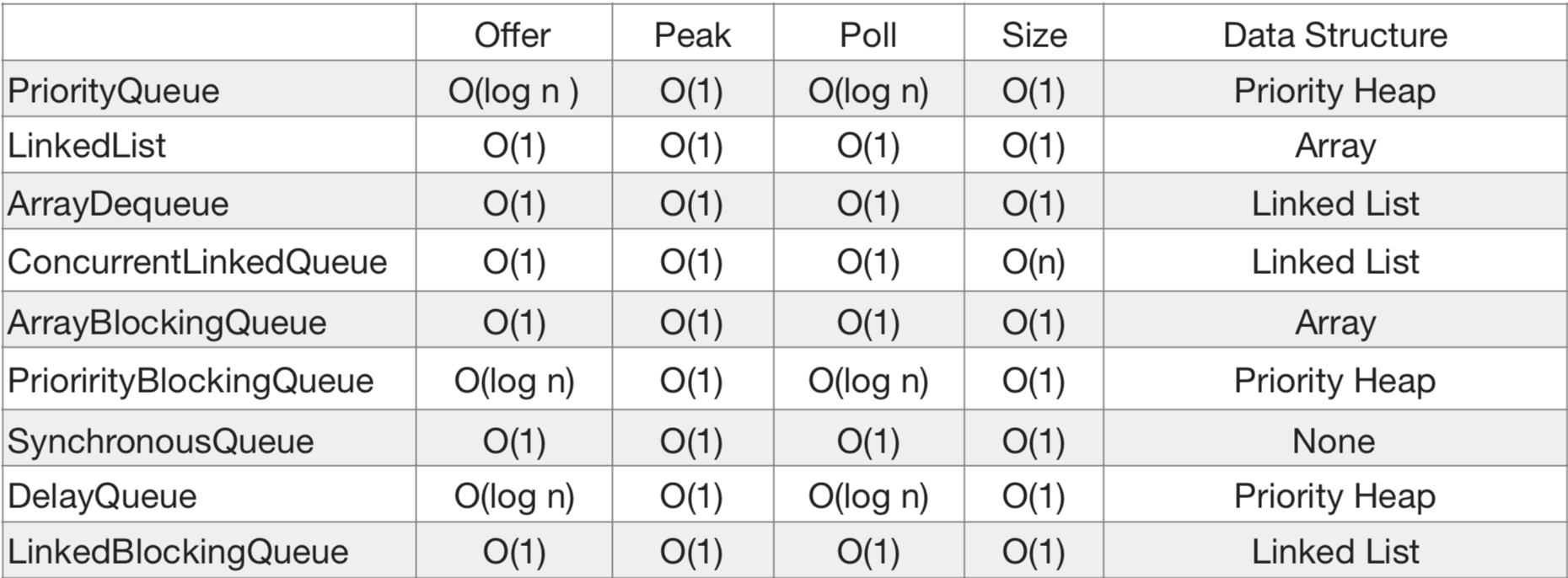

#Linked queue java full
The LinkedBlockingQueue class implements the BlockingQueue interface, which provides the blocking nature to it.Ī blocking queue indicates that the queue blocks the accessing thread if it is full (when the queue is bounded) or becomes empty. We can create a LinkedBlockingQueue from an existing collection as well: Collection listOfNumbers = Arrays.asList(1,2,3,4,5) īlockingQueue queue = new LinkedBlockingQueue(listOfNumbers) However, if there is no memory left, then the queue throws a. Therefore, the queue can grow dynamically as elements are added to it. Public void dequeue() throws QueueException Ĭustom Exception Class package .queue.BlockingQueue unboundedQueue = new LinkedBlockingQueue() Īn unbounded queue implies that the size of the queue is not specified while creating.

Here is the Queue Implementation with Iterator and Iterable interface * NoSuchElementException if this queue is empty. * The worstTime(n) is constant and averageTime(n) is constant. * Retrieves and removes the head of this queue. All those methods should be one-liners, as for example: /** Or you can take approach with aggreagation by creating PureQueue with only one field which is type LinkedList object, list, and the only methods will be a default constructor, a copy constructor, isEmpty(), size(), add(E element), remove(), and element(). You can overcome defective implementation of the Queue interface by extending the LinkedList class to a PureQueue class that throws UnsupportedOperationException of any of the offending methods. It should be ok,as this is heads-up to users that insertions should occur only at the back and deletions only at the front. Then you can violate queue definition, because it is possible to remove other elements than first (there are such methods in LinkedList).īut if you use it like this: Queue queue = new LinkedList() If you use it like this: LinkedList queue = new LinkedList() On the flip side, I DO intend to do a lot of pushing and popping, and the queue will be changing size quite a bit, so preallocating would be inefficient) What would be the best implementation of the Queue interface in Java for what I intend to do? (I do not wish to edit or even access anything other than the head and tail of the queue - I do not wish to do any sort of rearranging, or anything. Sadly, I cannot find any information related to the underlying implementation of linked lists in Java, so it's hard to say if a linked list is really the way to go. Now, this is all fine and dandy- but considering the fact that its queue will be analyzing THOUSANDS of pixels in a very short amount of time, while constantly popping and pushing, WITHOUT maintaining a predictable state (It could be anywhere between length 100, and 20000), the queue implementation needs to have significantly fast popping and pushing abilities.Ī linked list seems attractive due to its ability to push elements onto itself without rearranging anything else in the list, but in order for it to be fast enough, it would need easy access to both its head, AND its tail (or second-to-last node if it were not doubly-linked).

So I have decided to switch to a Queue-based algorithm. Unfortunately, that causes a Stack Overflow. I am working (in Java) on a recursive image processing algorithm that recursively traverses the pixels of the image, outwards from a center point.


 0 kommentar(er)
0 kommentar(er)
